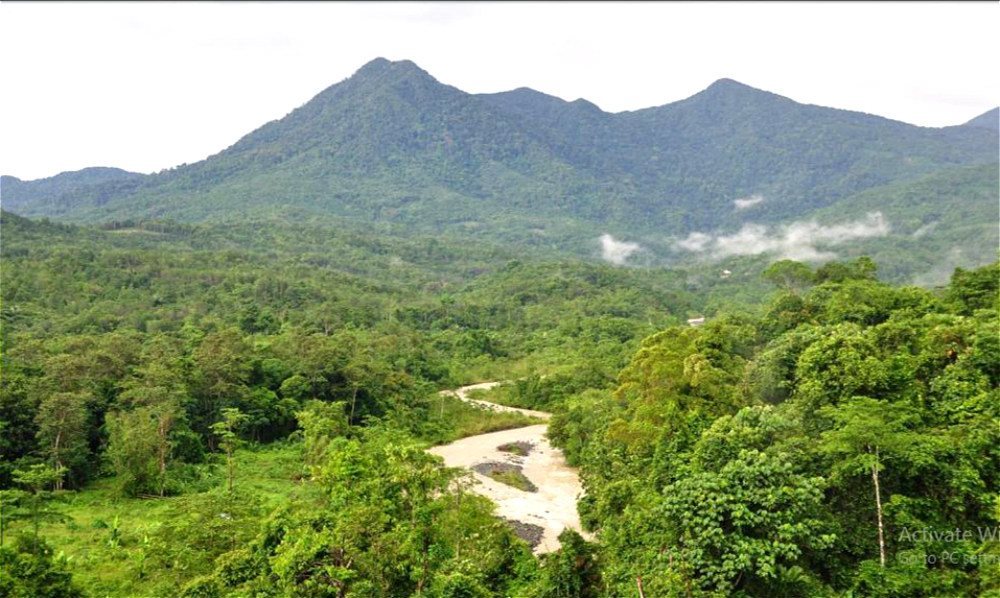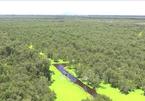At the 2010 Conference of the Parties (COP), the parties of CBD, including Vietnam, recognized new conservation measures as the complementary solution to the efforts of establishing official protected areas.

Harry Jonas, co-chair of the IUCN World Commission on Protected Areas (WCPA), said that OECM is an opportunity to recognize and contribute to the conservation of biodiversity outside protected areas.
OECMs may include many different types of governance, including the government, the private sector, local people or local communities.
An OECM needs to satisfy the requirements on locations outside protected areas and must have definable geographical boundaries. They need to be managed by appropriate agencies and have sustainable management policies. They also need to bring effective internal biodiversity conservation results and have potential for long-term biodiversity conservation.
Opportunities for Vietnam
Vietnam is home to large agricultural landscapes, including areas with high biodiversity, and areas subject to the restoration or re-establishment of ecosystem functions in nature so as to bring climate or biodiversity benefits. In these landscapes, there are many opportunities to recognize OECMs.
According to Nguyen Duc Tu, Coordinator of IUCN Biodiversity Program in Vietnam, OECM helps Vietnam fulfill conservation commitments, and protects habitats with high biodiversity which are at high risk, such as isolated karst areas, seasonally inundated grasslands and coastal mudflats.
OECMs also offer an opportunity to recognize contributions to biodiversity conservation by businesses and communities by improving the efficiency of the management of the land they are allowed to use.
| OECMs also offer an opportunity to recognize contributions to biodiversity conservation by businesses and communities by improving the efficiency of the management of the land they are allowed to use. |
Tu said Vietnam has OECMs, such as "no-enter areas"; sacred areas, military zones, war ruins, and other "prohibited" areas (dependent); areas preserved by low-impact use, watershed protection areas, and wetlands related to ecosystem services (secondary); private land areas for conservation as the first purpose, and areas which cannot or don’t want to be registered as protected areas (primary).
In Vietnam, OECM is a new internationally recognized definition that can help assess and recognize biodiversity conservation efforts outside protected areas; and can be used to formally recognize management forms and administrative subjects. This helps ensure the safety of the areas.
In particular, it can improve biodiversity conservation of various sectors, including the business sector (which is considered to be outside biodiversity conservation efforts); and supplement the list of CSR (corporate social responsibility) activities of businesses that have large land plots, ensuring biodiversity in development projects.
Mai Lan

In Vietnam, stopping biodiversity degradation a challenging task
Dr Nguyen Ngoc Lung, Director of the Institute for Sustainable Forest Management and Forest Certification, explains that biodiversity degradation can be seen in three forms - biodiversity of ecosystems; of species; and genetic biodiversity.

Vietnamese conservationist honored as biodiversity ‘Hotspot Hero’
The Critical Ecosystem Partnership Fund (CEPF) announced that Le Thi Trang and nine other conservationists from around the world have been named ‘Hotspot Heroes’ for their efforts to protect the world’s biodiversity hotspots.
 The recognition of OECMs (other effective area-based conservation measures) as a complementary approach to efforts to establish official reserves gives Vietnam an opportunity to expand and link the nation’s conservation networks." itemprop="description" />
The recognition of OECMs (other effective area-based conservation measures) as a complementary approach to efforts to establish official reserves gives Vietnam an opportunity to expand and link the nation’s conservation networks." itemprop="description" />